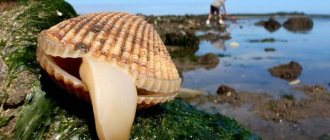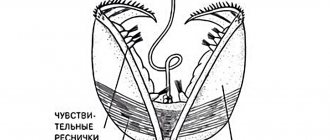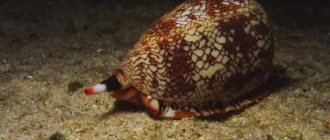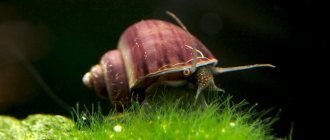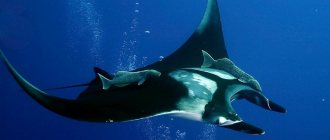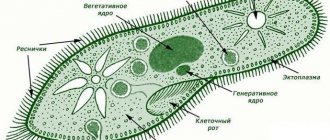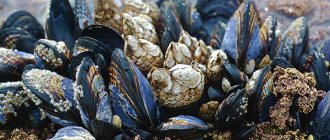There are two types of breathing in fish: air and water. These differences arose and were improved in the process of evolution, under the influence of various external factors. If fish have only a water type of respiration, then this process is carried out with the help of skin and gills. In air-type fish, the respiratory process is carried out using the epibranchial organs, swim bladder, intestines and through the skin. The main respiratory organs, of course, are the gills, and the rest are auxiliary. However, auxiliary or additional organs do not always play a secondary role; most often they are the most important.
Types of fish breathing
Cartilaginous and bony fish have different structures of gill covers. Thus, the former have partitions in the gill slits, which ensures that the gills open outwards with separate openings. These partitions are covered with gill filaments, which are, in turn, covered with a network of blood vessels. This structure of gill covers is clearly seen in the example of stingrays and sharks.
At the same time, in teleost species, these septa are reduced as unnecessary, since the gill covers are mobile on their own. The gill arches of fish serve as supports, on which the gill filaments are located.
Inspection of the gills
Our ancestors also determined the quality of fish by looking at its gills. They are the first to show signs of damage. “A fish spoils from the head” - everyone has probably heard this proverb. The gills should be bright red or light pink. Note that in some fish species they may have a dark red color. Frozen fish have completely different gills (in color). Typically, they are gray with a red tint. If the gills are white, this may mean that the fish has been frozen for the second time. Spoiled fish have gills that are pale, brown or dirty gray.
Functions of gills. Gill arches
The most important function of gills is, of course, gas exchange. With their help, oxygen is absorbed from the water, and carbon dioxide (carbon dioxide) is released into it. But few people know that gills also help fish exchange water-salt substances. So, after processing, urea and ammonia are released into the environment, salt exchange occurs between water and the fish’s body, and first of all this concerns sodium ions.
In the process of evolution and modification of subgroups of fish, the gill apparatus also changed. Thus, in bony fish, the gills look like scallops, in cartilaginous fish they consist of plates, and cyclostomes have sac-shaped gills. Depending on the structure of the respiratory apparatus, the structure and functions of the gill arch of fish are different.
Structure
The gills are located on the sides of the corresponding cavities of bony fish and are protected by covers. Each gill consists of five arches. Four gill arches are fully formed, and one is rudimentary. On the outer side, the gill arch is more convex; gill filaments, based on cartilaginous rays, extend to the sides of the arches. The gill arches serve as a support for attaching the petals, which are held on them by their base, and the free edges diverge inward and outward at an acute angle. On the gill filaments themselves there are so-called secondary plates, which are located across the petal (or petals, as they are also called). There are a huge number of petals on the gills; in different fish there can be from 14 to 35 per millimeter, with a height of no more than 200 microns. They are so small in size that their width does not even reach 20 microns.
The main function of the gill arches
The gill arches of vertebrates perform the function of a filtering mechanism with the help of gill rakers located on the arch, which faces the oral cavity of fish. This makes it possible to retain in the mouth suspensions found in the water column and various nutritional microorganisms.
Depending on what the fish eats, the gill rakers also change; they are based on bone plates. So, if a fish is a predator, then its rakers are located less frequently and are located lower, and in fish that feed exclusively on plankton that lives in the water column, the gill rakers are high and denser. In those fish that are omnivores, the stamens have an intermediate location between predators and planktivores.
Testing fish for elasticity
The freshness of the fish can be determined by studying the degree to which the dents on it that form after pressing with your fingers disappear. Good-quality fresh fish has flesh that is elastic to the touch. There are no dents left on it, and it fits perfectly on the spine.
It is necessary to press lightly on the surface of the carcass and if a dent remains on it, then the fish is not fresh enough. Newly caught fish has dense, elastic meat. It quickly restores its own shape. If the fish has been stored for a very long time, the mark will take a long time to disappear or will not disappear at all. You need to understand that fresh fish must have a non-bloated belly.
Circulatory system of the pulmonary circulation
The gills of fish are bright pink due to the large amount of oxygenated blood. This is due to the intensive process of blood circulation. The blood that needs to be enriched with oxygen (venous) is collected from the entire body of the fish and enters the gill arches through the abdominal aorta. The abdominal aorta branches into two bronchial arteries, followed by the branchial arterial arch, which, in turn, is divided into a large number of petal arteries enveloping the branchial filaments, located along the inner edge of the cartilaginous rays. But this is not the limit. The petal arteries themselves are divided into a huge number of capillaries, enveloping the inner and outer parts of the petals with a thick mesh. The diameter of the capillaries is so small that it is equal to the size of the red blood cell itself, which carries oxygen through the blood. Thus, the gill arches serve as a support for the rakers, which ensure gas exchange.
On the other side of the petals, all the marginal arterioles merge into a single vessel, which flows into the vein that carries blood, which, in turn, passes into the bronchial and then into the dorsal aorta.
If you examine the gill arches of fish in more detail and conduct a histological study, it is best to study a longitudinal section. This way, not only the stamens and petals will be visible, but also the respiratory folds, which are a barrier between the aquatic environment and the blood.
These folds are lined with just one layer of epithelium, and inside there are capillaries supported by pilar cells (supporting cells). The barrier of capillaries and respiratory cells is very vulnerable to the influence of the external environment. If there are admixtures of toxic substances in the water, these walls swell, peeling occurs, and they thicken. This is fraught with serious consequences, since the process of gas exchange in the blood is hampered, which ultimately leads to hypoxia.
Interesting Facts
Are you tired of being surprised yet? Then a few more interesting facts for a snack:
- Mudskipper . The jumper cannot be called a lungfish in the academic sense of the word, but he also sets records for staying out of water. This exotic miracle spends most of its life on land, in the humid atmosphere of mangroves. By the way, it really jumps well and even climbs the roots of trees in search of insects, which it primarily feeds on (the front fins have transformed into well-developed limbs). At the same time, this fish breathes through the entire surface of the skin, and the tail plays the main role in the oxygenation process. In an aquatic environment, it switches to the normal way of breathing.
- Crucian carp . The common crucian carp is capable of surviving in the most extreme conditions. Its element is overgrown ponds, where oxygen deficiency is common. It has well-developed skin respiration and the ability to swallow atmospheric air. You won’t believe it: in the periodically drying up lakes of Kazakhstan, live crucian carp were found that had lain in the silt for over a year!
- Slither bass . Before us is another amazing fish, characteristic of the ichthyofauna of South Asia - the climbing rope or creeper. It is called perch only due to its visual similarity with the corresponding fish - the sliders form a separate order. So, the crawler’s labyrinth works so well that it gives the ability to spend several days outside the water element, hunting for worms and insects. It is believed that the climbing rope is even capable of climbing trees (there are eyewitness accounts), but skeptics believe that birds of prey carry it there.
- Eel . Another miracle from the world of ichthyofauna is the eel. Not only does this fish look like a snake, but it is also capable of breathing atmospheric air, crawling between bodies of water completely like a snake. The eel is forced to do this by its reproductive instinct: it has to travel thousands of kilometers from European reservoirs to the Sargasso Sea, because it spawns exclusively there. The eel moves on land mainly at night and early in the morning, on dewy grass, going without water for several hours, which is facilitated by extremely developed skin respiration.
- Arapaima . Before us is the largest freshwater fish (it lives in the Amazon basin), which in itself is significant. But what is most remarkable is something else. The fact is that only juvenile arapaima breathe through gills in the first month of life. Adults use the swim bladder for this purpose, which has a very perfect structure and porous structure and is a close analogue of the lungs. Young arapaima are forced to surface for a breath of air once every 2-3 minutes, adults - once every 6-10 minutes. If you deprive them of this opportunity, they will choke, no matter how paradoxical this may sound when applied to fish.
This publication presents the most remarkable features of the respiration of various representatives of the ichthyofauna, but in fact there are much more of them. The world of fish is too amazing and multifaceted to be studied solely from a gastronomic point of view!
Fishermen wonder why I’m biting and they’re not?
I’m revealing a secret just for you: it’s all about the miracle bait! More details
Gas exchange in fish
Fish obtain oxygen through passive gas exchange. The main condition for enriching the blood with oxygen is a constant flow of water in the gills, and for this it is necessary that the gill arch and the entire apparatus retain their structure, then the function of the gill arches in fish will not be impaired. The diffuse surface must also maintain its integrity for proper oxygenation of hemoglobin.
To carry out passive gas exchange, the blood in the capillaries of fish moves in the opposite direction to the blood flow in the gills. This feature contributes to the almost complete extraction of oxygen from water and enriches the blood with it. In some individuals, the rate of blood enrichment relative to the composition of oxygen in water is 80%. The flow of water through the gills occurs due to its pumping through the gill cavity, while the main function is performed by the movement of the mouthparts, as well as the gill covers.
Study of scales
There should be no stains or damage on the scales of live fish. Benign fish have smooth scales that fit tightly to the body. Clean and shiny scales are a sign of freshness. You need to remember that fresh fish has a shine like varnish. If we are talking about marine life, then there should be no mucus on their scales. Freshwater species may have mucus on their bodies.
If the scales easily fall away from the body, this indicates that the fish managed to overcome a difficult and long journey from the place of catch to the store counter.
What determines the breathing rate of fish?
Thanks to the characteristic features, it is possible to calculate the breathing rate of fish, which depends on the movement of the gill covers. The oxygen concentration in the water and the carbon dioxide content in the blood affect the breathing rate of fish. Moreover, these aquatic animals are more sensitive to low oxygen concentrations than to large amounts of carbon dioxide in the blood. Respiration rate is also affected by water temperature, pH and many other factors.
Fish have a specific ability to extract foreign substances from the surface of the gill arches and from their cavities. This ability is called coughing. The gill covers are periodically closed, and with the help of the reverse movement of water, all suspensions located on the gills are washed away by the current of water. This manifestation in fish is most often observed if the water is contaminated with suspended matter or toxic substances.
Abstract on biology on the topic “Respiratory organs of fish”
RESPIRATORY ORGANS OF FISH
The main respiratory organ is the gills.
They consist of gill arches with many petals. Waste blood flows to the gill arches. Here it releases carbon dioxide into the water and is enriched with oxygen. For normal breathing, fresh water must flow to the gills all the time. When a fish swims, water enters the mouth, washes over the gills, and exits through the gill slits. When a fish is at rest, it constantly opens and closes its mouth, raises and lowers its gill covers, sucking in fresh water and pushing out “waste” water. To better use the oxygen contained in the water, a large gill surface is needed. For example, in a perch it is almost 30 times the surface of its body. Fish have different attitudes to the oxygen content in water. So, pike perch needs a significant amount of it, it does not tolerate dirty water, while other fish (pike, perch, bream, roach) are less predisposed to oxygen starvation. And tench and crucian carp are satisfied with a very insignificant oxygen content.
Oxygen enters water from the atmosphere and is released by aquatic plants, and the latter, on the one hand, release it under the influence of light, and on the other, absorb it in the dark and consume it during decay. Therefore, the positive role of plants in the oxygen regime is noticeable only during the period of their growth, i.e. in summer. From the atmospheric air, water is enriched with oxygen around the clock. The lower the temperature, the larger the water surface and the more intense the mixing, the better oxygen dissolves in water. Consequently, in summer, lower temperatures and strong winds help improve the well-being of fish, especially in reservoirs with insufficient oxygen.
Oxygen slowly penetrates from one water layer to another, and there is always more of it in the surface layers than near the bottom. This is one of the reasons for the poor development of life and the lack of accumulation of fish in the depths in summer, especially in stagnant reservoirs in hot, windless weather.
Lakes have areas with higher or lower oxygen concentrations. For example, the wind blowing from the shore drives away the upper, oxygen-rich layers of water, and in their place comes deep water that is poorly saturated with oxygen. Thus, a zone poorer in oxygen content is created near the quiet shore, and the fish, all other things being equal, prefers to stay near the surf shore.
Areas with a rocky or sandy bottom, at the outlet of spring waters, at the confluence of streams and rivers, are richer in oxygen. Fish usually choose such places for their winter stops. This is where anglers try to drill their holes. Rain can affect fish behavior in different ways. On the one hand, raindrops are saturated with oxygen and, when entering a reservoir, increase its total content in the water. On the other hand, raindrops, as a rule, carry a positive charge, and, as is known, positively charged particles have a depressing effect on living organisms, including fish. This means that it is difficult to say in advance whether the bite will improve after rain; it will depend on how great the oxygen deficit was in the reservoir, how heavy the rain was and where it fell - in the upper reaches of the river or directly at the fishing site. Usually, rains that fall in the upper reaches of rivers have an adverse effect on the bite in the lower reaches - oxygen is consumed along the way, but the positive charge of water particles is retained. In winter, when ice tightly binds the surface of the reservoir, it becomes very difficult for fish to breathe. There are even “killings”—massive deaths of fish from suffocation.
This is especially noticeable in shallow, heavily overgrown reservoirs with a muddy or peaty bottom, where the oxygen supply is spent on the oxidation of various organic residues. In winter, zones with unequal oxygen content are found in lakes even more often than in summer. Areas with a rocky or sandy bottom, at the outlet of spring waters, at the confluence of streams and rivers, are richer in oxygen. These places are usually chosen by fish for winter stopovers.
Fish have two types of respiration: water (using gills and skin) and air (using the skin, swim bladder, intestines and epibranchial organs). The respiratory organs of fish are divided into: 1) main (gills); 2) additional (all others).
Basic respiratory organs. The main function of the gills is gas exchange (oxygen absorption and carbon dioxide release); they also participate in water-salt exchange and release ammonia and urea.
In cyclostomes, the respiratory organs are represented by gill sacs (of endodermal origin), which were formed as a result of separation from the pharynx. The lamprey has seven pairs of gill sacs with two openings in each of them: external and internal, leading into the respiratory tube and capable of closing. The breathing tube was formed as a result of the division of the pharynx into two parts: the lower respiratory and upper digestive. The tube ends blindly and is separated from the oral cavity by a special valve. The larva of the lamprey (sandfly) does not have a breathing tube and the internal gill openings open directly into the pharynx. In most hagfishes, the external gill openings on each side are combined into a common canal, which opens beyond the last gill sac. In addition, the nasal opening of hagfishes communicates with the pharynx. In cyclostomes, water enters through the mouth opening into the pharynx or respiratory tube (in adult lampreys and hagfishes), then into the gill sacs, from where it is pushed out. When feeding, water is sucked in and expelled through the external gill openings. In hagfishes buried in the mud, water enters the gill sacs through the nasal opening.
In fish embryos, respiration is carried out due to a developed network of blood vessels on the yolk sac and in the fin fold. As the yolk sac dissolves, the number of blood vessels on the fin folds, sides, and head increases. The larvae of some fish develop external gills - skin outgrowths equipped with blood vessels (lungfishes, polyfins, loaches, etc.).
The main respiratory organs of adult fish are gills (of ectodermal origin).
Most cartilaginous fish have five pairs of gill openings (some have 6–7) and the same number of gill arches. There is no operculum, with the exception of whole-headed fish (chimeras), in which the gill slits are covered by a fold of skin. In sharks, gill openings are located on the sides of the head, in rays - on the lower surface of the body.
Each gill of cartilaginous fish consists of: 1) a gill arch; 2) gill filaments; 3) gill rakers.
The interbranchial septum extends from the outer side of the gill arch; the gill filaments cover it on both sides, while the posterior edge of the septum remains free and covers the outer gill opening. The gill septa are supported by cartilaginous supporting rays. Gill rakers are located on the inner surface of the gill arch. At the base of the interbranchial septum there are blood vessels: 1) the afferent branchial artery, through which venous blood flows; 2) two efferent branchial arteries with arterial blood.
Gill filaments located on one side of the septum form a semi-gill. Thus, the gill consists of two half-branchs located on one gill arch, and the combination of two half-branchs facing one gill slit forms a gill sac. The first four of the five gill arches have two half-branchs, while the last one has no filaments, but the first gill sac on the hyodic arch has another half-branch. Consequently, cartilaginous fish have four and a half gills.
In cartilaginous fish, the respiratory organs may include squirts, which are a rudimentary gill slit. They are located behind the eyes and communicate with the oropharyngeal cavity. There are valves on the front wall of the squirter, and on the back wall there is a false gill that supplies blood to the organs of vision. Cartilaginous and sturgeon have squirts. In cartilaginous fish, unlike bony fish, the gills do not secrete products of nitrogen metabolism and salts.
When sharks breathe, water enters through the mouth and exits through the external gill slits. In stingrays, water enters the oropharyngeal cavity through the open valves of the squirt tubes, and when the valves close, it comes out through the gill slits.
Sturgeon fish have short intergill septa in their gills. Their reduction is associated with the appearance of the operculum, from which branch the gill membranes extend, covering the gills from below. Sturgeons (like cartilaginous fish) have five pairs of gill arches; the last gill arch, hidden under the skin, has no gill filaments. The anterior row of gill filaments is located on the inner surface of the operculum and forms the semi-gill of the hyodic arch (opercular gill). Sturgeons, like cartilaginous fish, have four and a half gills. On the inner surface of the gill arch, gill rakers are located in two rows.
Teleost fish have four gill arches and the same number of complete gills (the posterior, fifth, gill arch does not bear gills). Each gill consists of two semi-branchs, but due to the presence of a developed gill cover, the interbranchial septum is completely reduced, and the gill filaments are attached directly to the gill arch, which increases the respiratory surface of the gills. The basis of the gill is the bony gill arch, on which triangular-shaped gill filaments are located. The gill filaments are covered on both sides by gill filaments (or respiratory folds), where gas exchange occurs. At the base of the gill filaments there are chloride cells that remove salts from the body. A supporting cartilaginous ray runs along the inner edge of the gill filament, along which runs the petal artery, and on the opposite side the petal vein. The afferent and efferent gill arteries pass at the base of the gill filaments. On the inner surface of the gill arch there are gill rakers of various sizes and shapes.
During gill respiration of bony fishes, water enters the pharynx through the mouth, passes between the gill filaments, releases oxygen into the blood, receives carbon dioxide and leaves the gill cavity to the outside. Gill respiration can be: 1) active, water is sucked into the pharynx through the mouth opening and washes the gill filaments due to the movement of the gill covers (in all fish); 2) passive, fish swim with their mouth and gill covers slightly open, and the flow of water is created by the movement of the fish itself (in fish living in water with a high oxygen content).
Additional respiratory organs. During the process of evolution, bony fish living in water bodies where there is a deficiency of oxygen have developed additional respiratory organs.
Skin respiration is characteristic of almost all fish. In fish from warm, stagnant bodies of water, about 20% of the oxygen consumed is supplied through the skin, sometimes this value can increase to 80% (carp, crucian carp, tench, catfish). In fish that live in water bodies with a high oxygen content, skin respiration does not exceed 10% of the total oxygen consumption. Juveniles, as a rule, breathe more intensely through their skin than adults.
Some species are characterized by air breathing, which is carried out with the help of epibranchial organs that have different structures. In the upper part of the pharynx, many of them develop paired hollow chambers (epibranchial cavities), where the mucous membrane forms numerous folds penetrated by blood capillaries (snakeheads). In creeper (labyrinthine) fish, the folds of the mucous membrane are supported by labyrinthine curved bone plates extending from the first gill arch (creeper, cockerels, gourami, macropods).
In clariid catfishes, an unpaired tree-like branched epibranchial organ extends from the gill cavity, located above and behind the gills. In pouchbranch catfishes, additional respiratory organs are paired long blind pouches that extend from the gill cavity and extend under the spine to the tail. Fish that have epibranchial organs have adapted to breathing atmospheric oxygen and, deprived of the ability to rise and swallow air at the surface, die from suffocation even in water rich in oxygen.
Some fish exhibit intestinal respiration. The inner surface of their intestines is devoid of digestive glands and is penetrated by a dense network of blood capillaries where gas exchange occurs. Air swallowed through the mouth passes through the intestines and exits through the anus (loach) or is pushed back and exits through the mouth (tropical catfish). A number of tropical fish use a stomach or a special blind outgrowth of the stomach filled with air to breathe air.
The swim bladder of fish is also involved in gas exchange. In lungfish, it is transformed into a kind of lungs; they have a cellular structure and communicate with the pharynx. When breathing, air enters the lungs through the mouth or nasal openings. Among the lungfishes there are one-lunged (cattail) and two-lunged (protopterus, lepidosiren). In monopulmonates, the lung is divided into two parts and the gills are well developed, so they can breathe equally with both lungs and gills. In bipulmonates the swim bladder is paired, the gills are underdeveloped. When fish are in water, the lungs are additional respiratory organs, and in dry reservoirs, when they bury themselves in the ground, the lungs become the main respiratory organ.
The swim bladder is also an additional respiratory organ in some other open-bladder fish (polyfin, amia, armored pike, characins). It is penetrated by a dense network of blood capillaries, and some have cellularity, which increases the internal surface.
Additional gill functions
In addition to the main, respiratory, gills perform osmoregulatory and excretory functions. Fish are ammoniotelic organisms, in fact, like all animals that live in water. This means that the end product of the breakdown of nitrogen contained in the body is ammonia. It is thanks to the gills that it is released from the fish’s body in the form of ammonium ions, while cleansing the body. In addition to oxygen, salts, low molecular weight compounds, as well as a large number of inorganic ions found in the water column enter the blood through the gills as a result of passive diffusion. In addition to the gills, the absorption of these substances is carried out using special structures.
This number includes specific chloride cells that perform an osmoregulatory function. They are capable of moving chlorine and sodium ions, while moving in the direction opposite to the large diffusion gradient.
The movement of chlorine ions depends on the habitat of the fish. Thus, in freshwater individuals, monovalent ions are transferred by chloride cells from water to the blood, replacing those that were lost as a result of the functioning of the excretory system of fish. But in marine fish the process occurs in the opposite direction: release occurs from the blood into the environment.
If the concentration of harmful chemical elements in the water is noticeably increased, then the auxiliary osmoregulatory function of the gills may be impaired. As a result, not the amount of substances that is necessary enters the blood, but in much higher concentrations, which can have a detrimental effect on the condition of the animals. This specificity is not always negative. So, knowing this feature of the gills, you can fight many fish diseases by introducing medicinal drugs and vaccines directly into the water.
Intestinal respiration
Depending on the habitat, the way fish breathe changes. Thus, tropical catfish and loach fish actively breathe using their intestines. Air, when swallowed, enters there and, with the help of a dense network of blood vessels, penetrates into the blood. This method began to develop in fish due to specific environmental conditions. The water in their reservoirs, due to high temperatures, has a low oxygen concentration, which is aggravated by turbidity and lack of flow. As a result of evolutionary transformations, fish in such reservoirs have learned to survive using oxygen from the air.
Accessory respiratory organs
As a rule, nature “builds” auxiliary respiratory organs into fish. And the less favorable the living conditions, the more such auxiliary organs there are, the greater the load falls on them.
It was found that most fish ventilate their gills with fins. Of course, they play an auxiliary function, but its importance is difficult to overestimate. The movements of the fins contribute to the rapid flow of water and washing of the gills, which is especially important in the oxygen-poor water of small standing reservoirs.
The fact is that gills only work in water: they are unable to absorb oxygen from the air. On land they dry out and stick together, which leads to the rapid death of the individual. The more tightly the gill covers are able to seal the delicate contents, the longer the fish will survive without water. This is why herring, silver carp, and trout die almost immediately, and carp, carp or crucian carp can lie in wet grass for hours or even days without significant harm to health.
In order to somehow allow fish to survive difficult times, nature has endowed them with reserve capabilities that are sometimes amazing.
Leather
Let's deviate a little from the fish theme and think about the pores on our skin. In the Middle Ages, not very enlightened, sometimes people were covered with paint in order to make them look like statues (tyranny of those in power, what can you do). If you leave the paint on the skin for several hours and then wash it off, it will not cause any particular harm to your health. But if the coating saturated with toxins is left for several days, the person will most likely die: he will be poisoned and suffocate at the same time. Now we know that the skin must breathe!
A similar picture is observed in fish - they are more or less characterized by cutaneous respiration. Of course, you won’t get a lot of oxygen through the skin, but you also need to take into account the fact that the body of a fish numb in air consumes much less of it. However, it must be taken into account that in most cases, representatives of the ichthyofauna can only breathe through wet skin.
Sturgeon has always been held in high esteem in the capital, but freezing technologies have only recently appeared. Previously, large sturgeon were transported to the capital city in canvas cradles, and smaller sterlet in baskets filled with damp moss. Sometimes tampons soaked in strong alcohol were placed in the sturgeon’s mouths, as a result of which the fish became stunned and survived the journey of several days well.
swim bladder
Perhaps there is no more multifunctional organ in fish than the swim bladder. This is both an organ of balance, and a resonator that allows you to amplify acoustic and other signals, and a kind of “lifebuoy” that allows the fish to stay on the selected water horizon without making the slightest effort.
Almost all representatives of the ichthyofauna that live in our reservoirs know how to pump and release air from this organ, but some fish have even learned to breathe with it! Many inhabitants of water bodies swallow atmospheric air and transport it not only to the gills, but also to the swim bladder (have you heard how carp and crucian carp “champ” in the thickets?), but this organ performs a full respiratory function only in lungfishes, which we will talk about in a moment. Later.
Scientists believe that the primary function of the swim bladder in prehistoric species was respiratory, and only then, with the advent of bony fish, it was transformed into hydrostatic.
Intestines
Yes, yes, you heard right: there are fish that can swallow air and pass it through the digestive tract in order to enrich the body with oxygen. The most striking example of this phenomenon is the catfish of the genus Corydoras.
In this regard, we cannot fail to mention the loach we know: its intestines play a vital respiratory role. Under favorable conditions, the loach breathes with gills, but when there is a lack of oxygen, it also uses an auxiliary organ. It swallows atmospheric air, passes it through the stomach and intestines, dotted with a dense network of capillaries, and then releases it out through the anus.
Unaesthetic? But it is practical: this small fish can breathe atmospheric air even through a layer of silt, waiting for rains or floods in relatively comfortable and safe conditions.
Labyrinth
A special respiratory organ called the “labyrinth” allows some representatives of the ichthyofauna to almost fully breathe atmospheric air. This organ is paired, located above the gills. When you inhale, atmospheric air enters the chambers of the labyrinth, dotted with vessels, and enriches the blood with oxygen.
The inhabitants of our reservoirs cannot boast of the presence of this organ (with the possible exception of the snakehead), but many aquarium fish can breathe using the labyrinth. The secret lies in the fact that these fish naturally live in the tropics, where even under normal conditions the water is poor in oxygen, and droughts are common.
The same gourami periodically rise to the surface of the water to swallow air. By the way, if you deprive them of this opportunity, they will simply suffocate, that is, the gills in this case share the respiratory function with the labyrinth, but do not replace it.
Types of swim bladder structure
Depending on the anatomical structure of the swim bladder, all types of fish are divided into:
- open vesical;
- closed vesicular.
The first group is the most numerous and is the main one, while the group of closed-vesical fish is very insignificant. These include perch, mullet, cod, stickleback, etc. In open-vesical fish, as the name suggests, the swim bladder is open for communication with the main intestinal flow, while in closed-vesical fish, accordingly, it is not.
Cyprinids also have a specific swim bladder structure. It is divided into posterior and anterior chambers, which are connected by a narrow and short channel. The walls of the anterior chamber of the bladder consist of two membranes, outer and inner, while the posterior chamber does not have an outer one.
The swim bladder is lined with one row of squamous epithelium, after which there is a row of loose connective, muscle and a layer of vascular tissue. The swim bladder has a pearlescent sheen unique to it, which is provided by a special dense connective tissue with a fibrous structure. To ensure the strength of the bladder, both chambers are covered with an elastic serous membrane from the outside.



